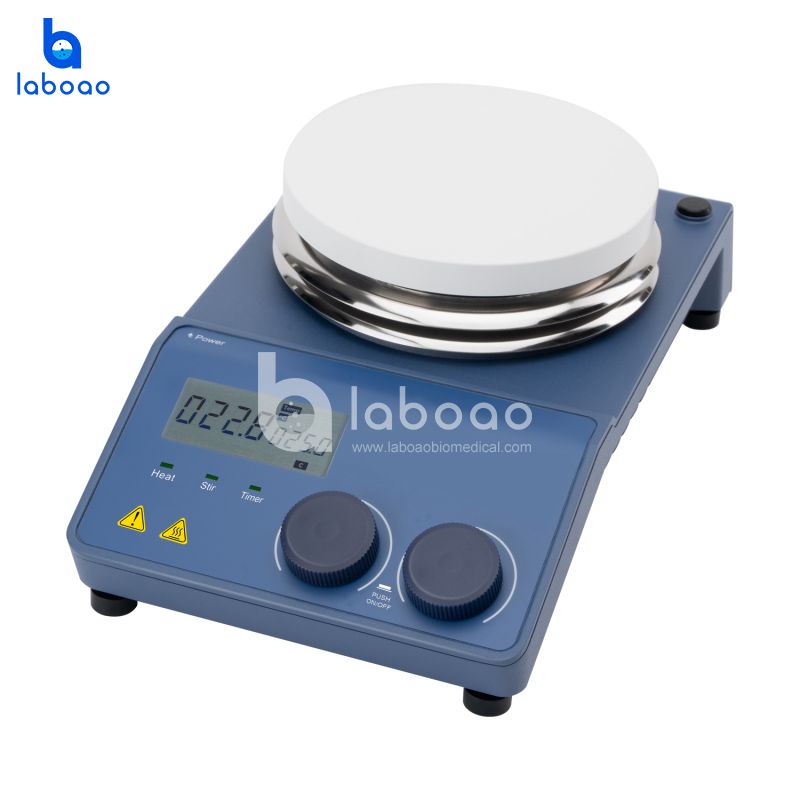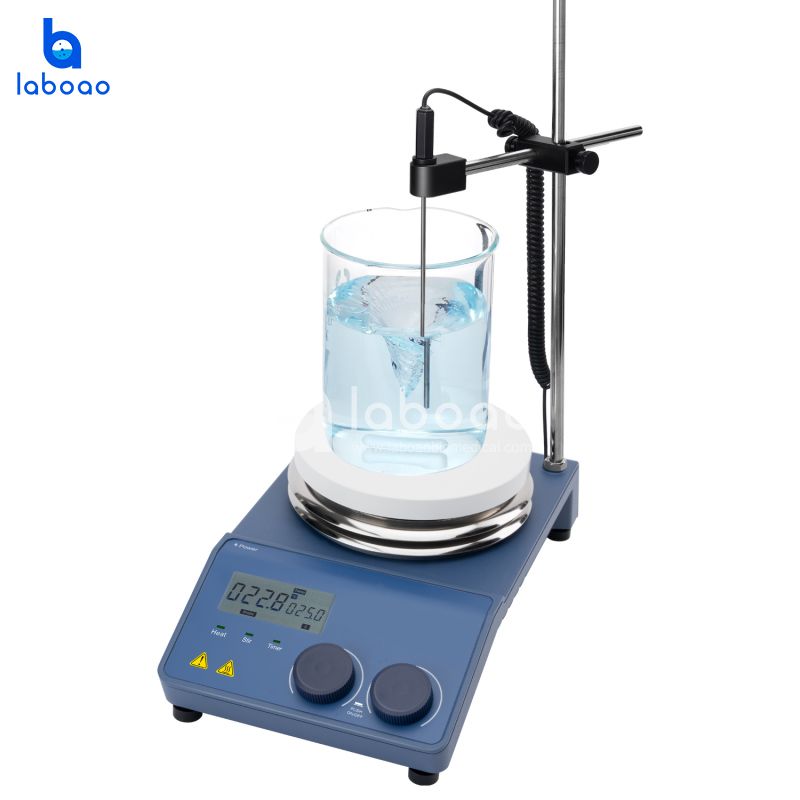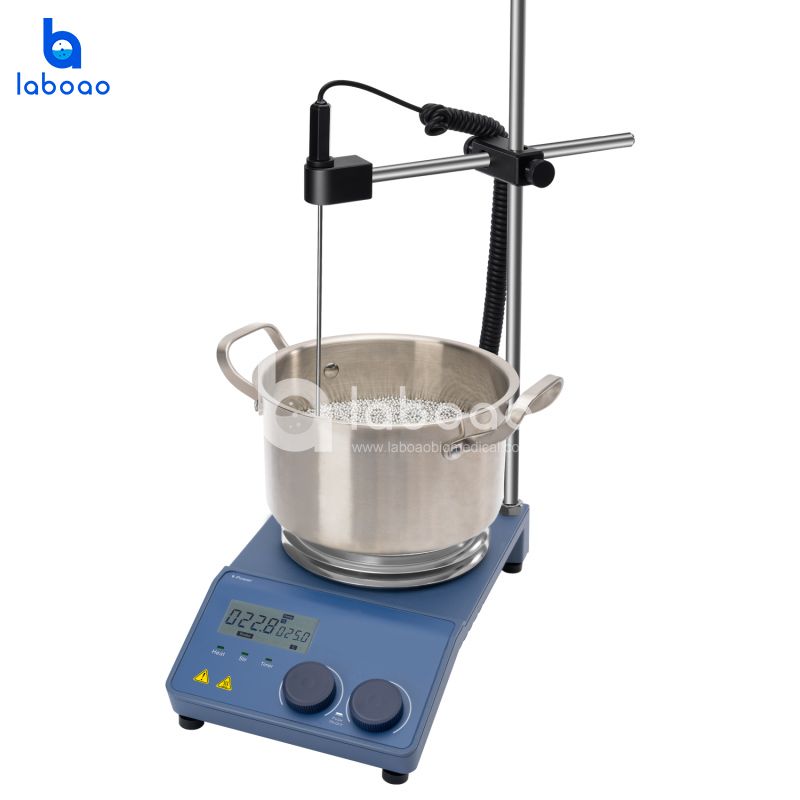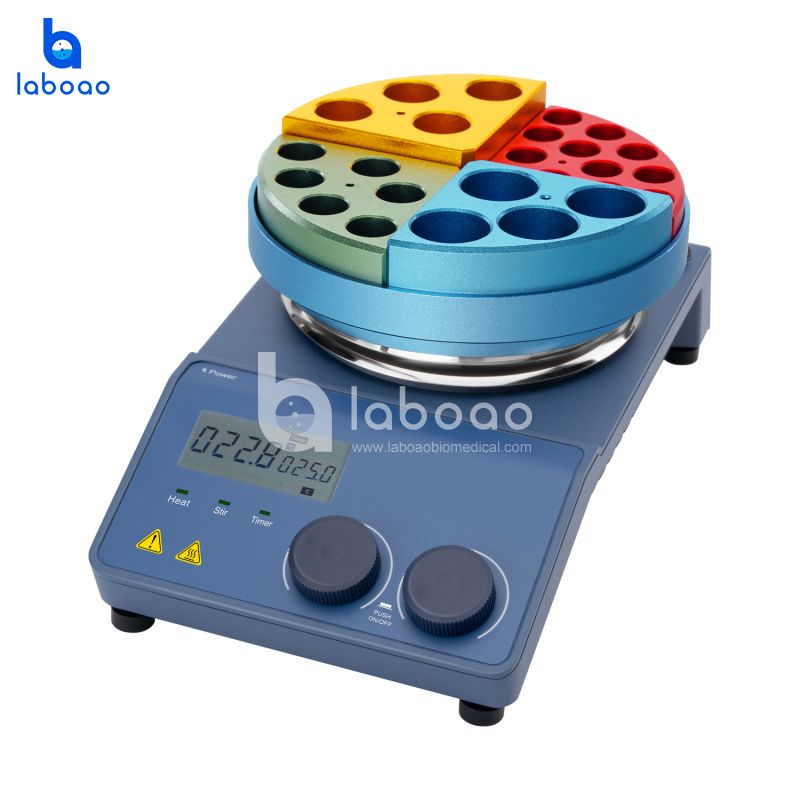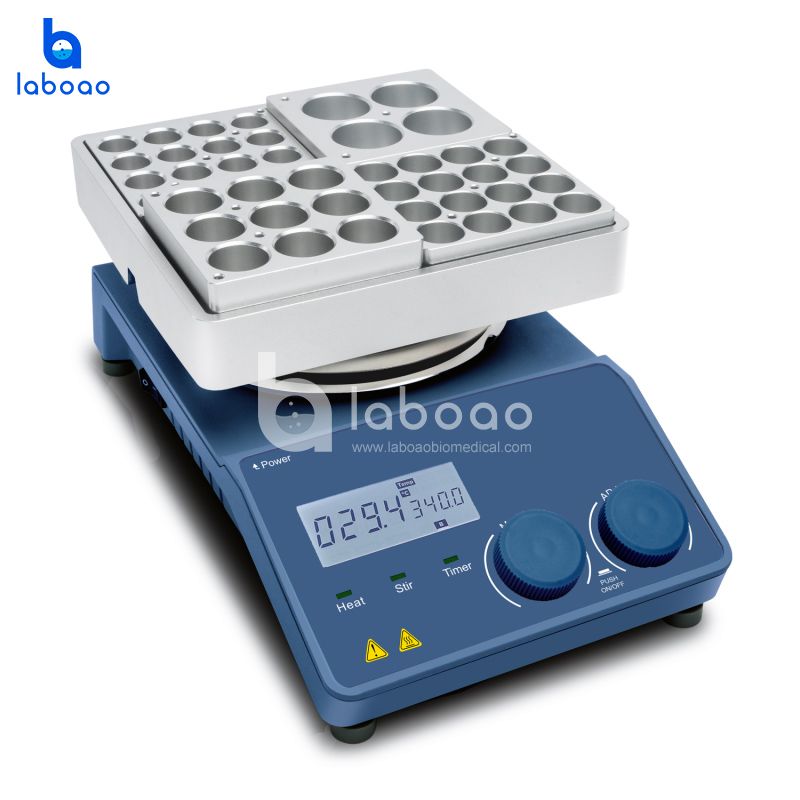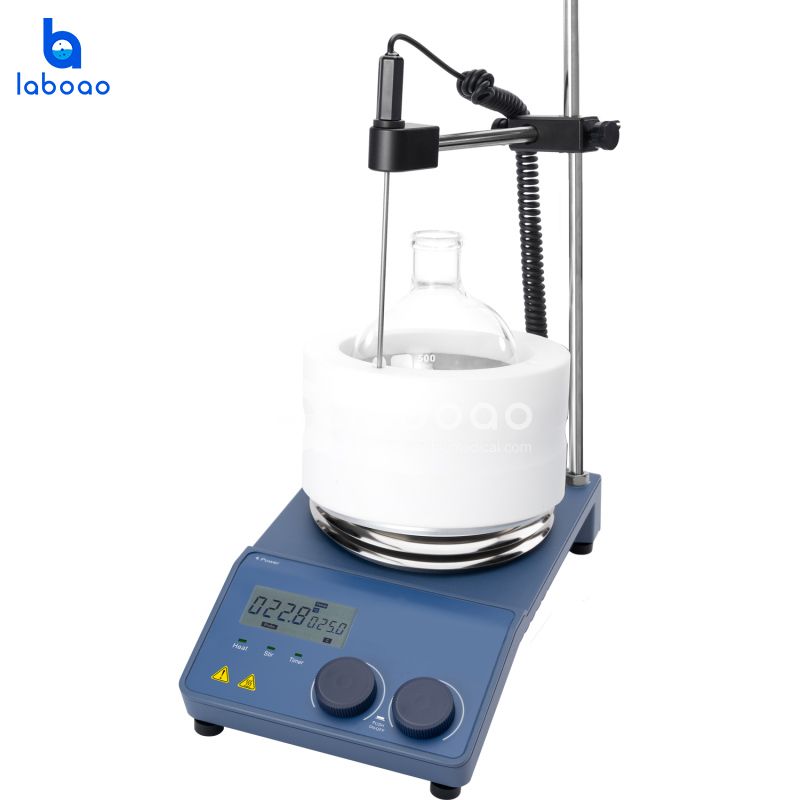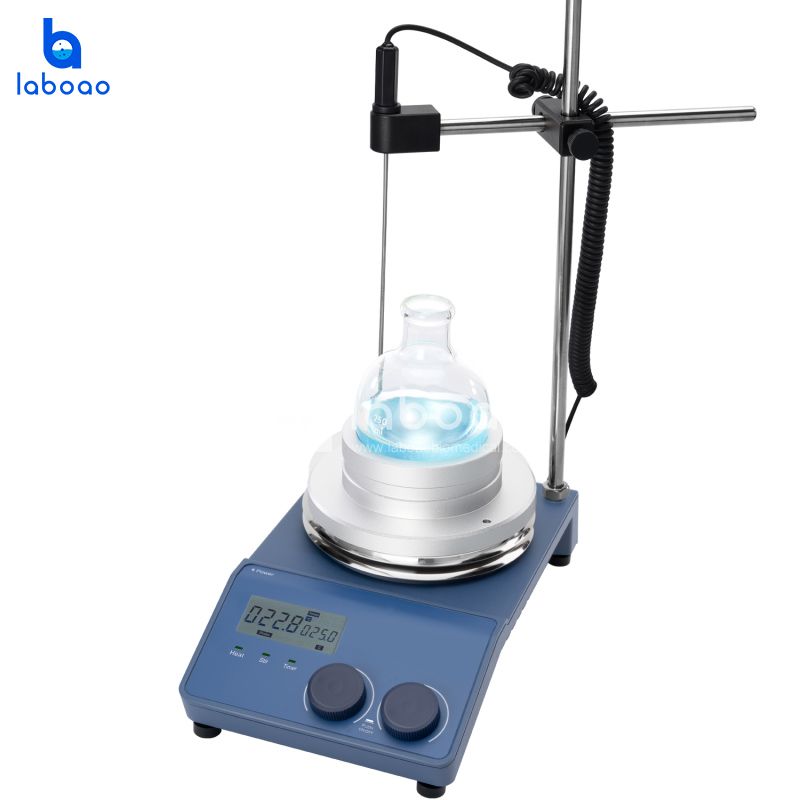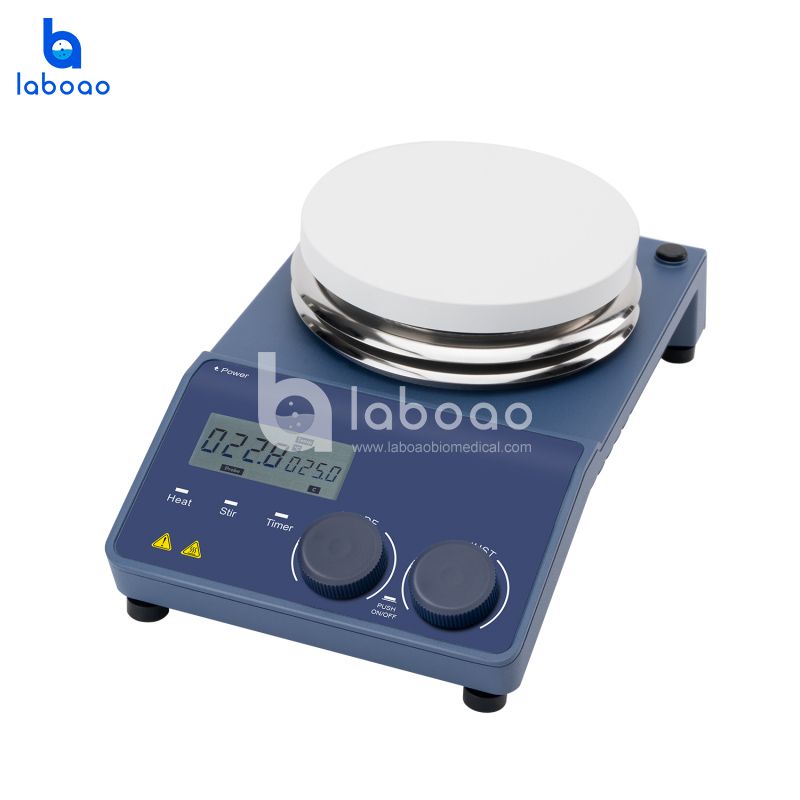OVERVIEW
Magnetic stirrer is a laboratory tool that stirs liquids using a rotating magnetic field. It's used for mixing solutions, culturing cells, and performing chemical reactions. It is mainly used in chemical synthesis, physical and chemical analysis, biopharmaceuticals and other fields.
FEATURES
1. Equipped with brushless DC motor, explosion-proof and maintenance-free;
2. Digital temperature control, the maximum temperature can reach 340℃;
3. The maximum speed can reach 1500rpm;
4. The maximum stirring volume (H2O) can reach 20L;
5. Residual heat warning function: When the disk temperature exceeds 50℃, the display "HOT" flashes, prompting high temperature, effectively improving the operator's experimental safety;
6. Independent safety circuit design, when the disk temperature exceeds 420℃ at any time, it automatically stops heating to improve laboratory safety;
7. Three heating modes are optional: Mode A: accelerated heating; Mode B: stable heating; Mode C: precise temperature control;
8. The heating function is controlled separately, and the indicator light is highlighted after the heating is turned on to avoid misoperation; when the heating stops due to unexpected circumstances, stirring continues to prevent the sample from being damaged by heat.
7. Temperature control: The microprocessor controller provides additional safety control circuits and heating cut-off functions through two independent temperature probes.
8. With timing function, the timing time is 1min-99h59min;
9. The high-definition LCD display simultaneously displays the actual temperature, speed and time;
10. The external temperature sensor PT1000 can be connected to accurately control the sample temperature, with a temperature control accuracy of ±0.2℃;
13. The stainless steel ceramic coating working plate is extremely resistant to chemical corrosion;
14. RS232 data transmission function, the instrument can be remotely controlled by a computer and the speed and temperature data can be recorded;
15. There are a variety of accessories to match.
